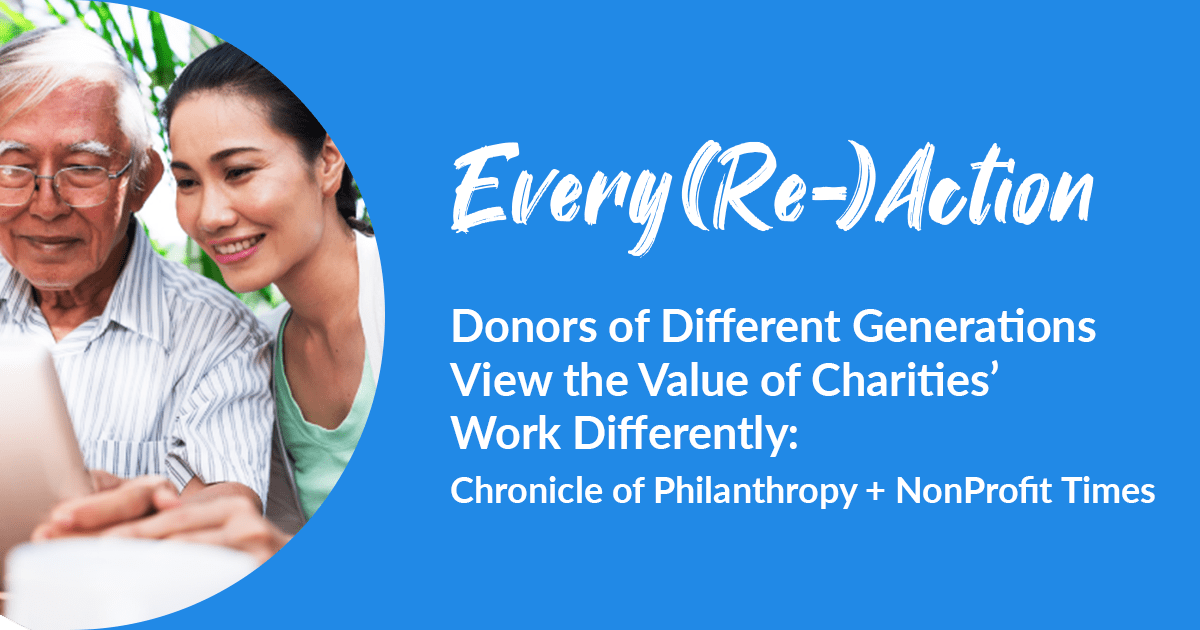Every(Re)Action | Building Donor Trust Across Generations: Chronicle of Philanthropy and NonProfit Times

Both the NonProfit Times and the Chronicle of Philanthropy agree: the BBB Wise Giving Alliance’s findings in their latest Special Report mean nonprofits who want to build donor trust and deepen those relationships will need to re-evaluate how they’re communicating their impact in order to earn trust with different generations of givers.
The study was conducted with the goal of “adding to the charitable sector’s understanding of individual donor perceptions related to charity impact,” because “given that the term ‘charity impact’ has momentum but is also fluid and unspecific[… the report sought to] explore how the donating public understands the term.”
NonProfit Times emphasized the study’s finding that “charity impact” is a term currently without a universal definition: “almost half of American adults surveyed (47%) are unclear about what that phrase means. The remaining 53% of respondents who claimed they know what a charity means when talking about “impact” varied, depending on their generation.”
The Chronicle reported the generational breakdown this way:
Among members of Generation Z, a 40 percent plurality defined “charity impact” as “organizations reaching defined goals.” Among their older, millennial peers, the most common definition was “how efficient the organization was in its spending,” with 27 percent responding so. Among Generation X, 23 percent defined it as reaching defined goals. And among “matures” (people born before 1945) and baby boomers, “quality of programs” was the most popular definition, selected by 26 percent and 24 percent, respectively.
Chronicle of Philanthropy, “Donors of Different Generations View the Value of Charities’ Work Differently”
Other findings from the study included:
- Larger donors are more likely to say they would highly prioritize long-term results, while people who did not donate in 2020 are more likely to say they would prioritize immediate results.
- 40 percent of respondents said that when making their decisions about which charities to support, how much they trusted a charity was “very important.”
- 21 percent said that stories about a charity’s work are an important facet of their donation decision-making process.
- Communicating organizational impact using “bang for your buck” statements gave mixed results: 17 percent of respondents said they came across as untrustworthy, but 15 percent considered language like that to be highly trustworthy.
Our Take:
One strong strategy to build donor trust and communicate your organization’s impact is through transparency and careful compliance with charity regulations. Another strong strategy? Segmenting donors and targeting those segments differently by what you know about them. When you can target your donors efficiently and message each segment differently about your impact, you can align your strategy with fundraising’s north star: the right message, to the right person, in the right channel, at the right time.


